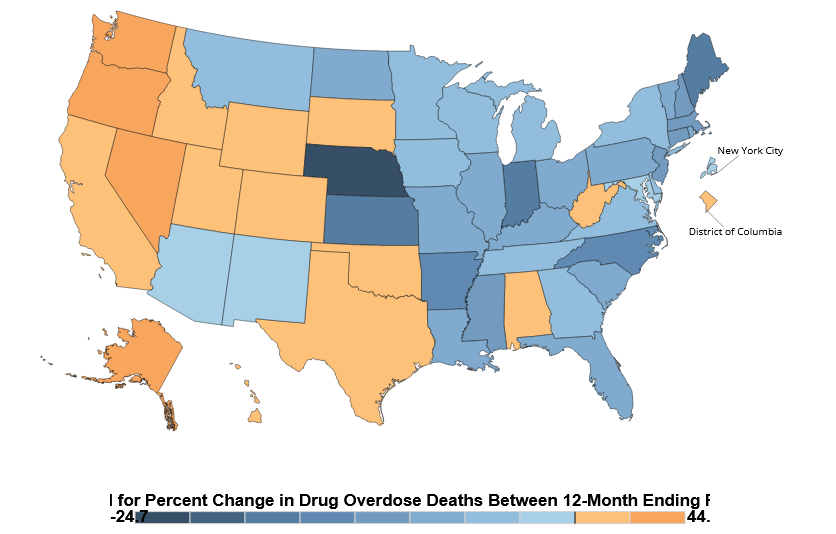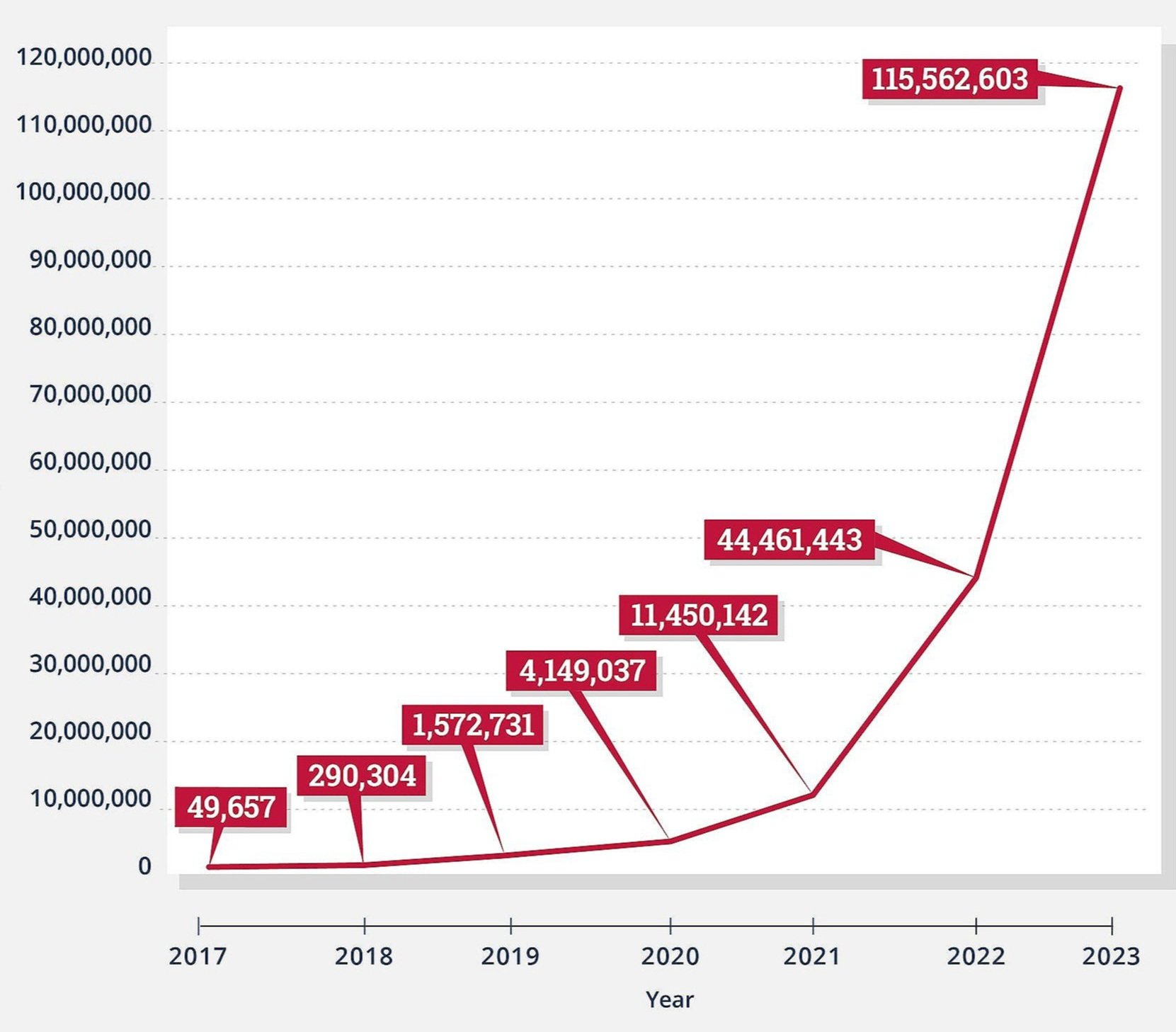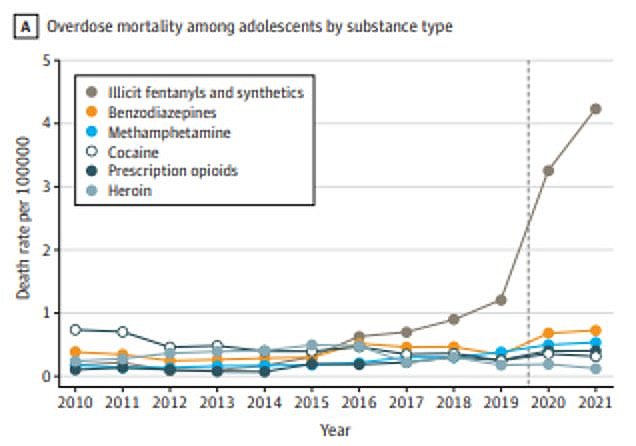Are U.S. Overdose Deaths Really Declining?
/By Pat Anson
Preliminary data from the CDC suggest that U.S. overdose deaths have declined significantly, falling by 10% in the last year alone. If confirmed, the double-digit drop would mean there were 11,247 fewer drug deaths in the 12-month period ending in April 2024.
The decline, first reported by NPR, was hailed by addiction and public health experts as a hopeful sign that progress is finally being made in reducing the number of drug deaths, which have doubled in the past decade to over 100,000 a year.
“This is exciting," said Dr. Nora Volkow, director of the National Institute on Drug Abuse. "This looks real. This looks very, very real."
Good news, if it’s true. But caution is warranted about how “real” the decline is, because preliminary death data often changes as more information comes in.
Overdose data is fragmented in both quality and quantity, as it comes from 50 different sources. The data is collected by each state and then submitted to the CDC to decipher for its monthly Provisional Drug Overdose Death Count.
Some states still do not use toxicology tests to confirm whether a death is drug-related – leaving it up to medical examiners and coroners to decide which drugs, if any, may have played a role in someone dying. Some elected coroners, particularly in rural counties, have no medical training or expertise in drug death investigations. And in many cases, autopsies are not performed.
In addition to the wide variability in expertise and data collection, overdoses are typically not reported to the CDC until four months after the date of the death, sometimes longer. In its most recent provisional count, the CDC acknowledged that its overdose data may underestimate the actual number of deaths.
“Some states may have longer than usual delays in submitting drug overdose deaths. In particular, North Carolina is experiencing substantial delays in the resolution of pending records by the medical examiner’s office. Recent trends may underestimate the death count in affected states and this potential impact should be considered when comparing results for states to previous months,” the CDC said.
Percent Change in Drug Overdose Deaths (April 2023 to April 2024)
SOURCE: CDC
Reported vs Predicted
Because the provisional counts are often incomplete and the causes of many deaths are “pending investigation,” the CDC maintains two different data sets. One is the number of “reported” cases, and the other is the “predicted” number of deaths. The latter is where the 10% decline comes from.
The number of reported drug deaths is even lower than the predicted ones, suggesting there has been a 12.2% decline in overdoses nationwide. But that number is also misleading because it is based on incomplete data.
Take North Carolina, for example. For the most recent 12-month period ending in April, North Carolina reported 2,512 drug deaths, compared to 4,317 overdoses from the year before. That’s a whopping decrease of nearly 42 percent!
No one believes that number is real and will hold up over time. Not even Nora Volkow.
North Carolina is not an outlier. Reported drug deaths in Nebraska are down nearly 30 percent, but the data from there is considered “underreported due to incomplete data.” The same is true for Ohio, Pennsylvania and Michigan, where reported drug deaths are down about 20 percent. Big states like that can sway nationwide estimates.
Meanwhile, reported drug deaths are up in several western states: +42% in Alaska, +15% in Oregon, +13% in Nevada, +10% in Washington and +7% in Utah. It’s hard to square those numbers with any national trend.
“Utah’s trends haven’t aligned with national trends for some time. We plateaued while overdoses increased significantly at the national level, especially during the pandemic,” Megan Broekemeier, an overdose research coordinator for the Utah Department of Health and Human Services, told the Deseret News. “We haven’t seen statistically significant changes in the rate yet.”
‘The Dip in Overdoses Is Real’
To be fair, some of the overdose-related data is encouraging and suggest that drug deaths are in fact declining.
In a blog that tracks health data trends, Nabarun Dasgupta, PhD, a drug researcher and scientist at the University of North Carolina, reported a nationwide drop in ER visits and EMS calls (ambulance runs) involving overdoses. He estimates that non-fatal overdoses have fallen -15% to -20% nationwide
“A 15-20% decrease in non-fatal overdose and a 10% decrease in fatal overdose is a major impact. There is barely any public health intervention that has credibly achieved this magnitude of decrease,” wrote Dasgupta. “Our conclusion is that the dip in overdoses is real, and not a data artifact. It remains to be seen how long it will be sustained.”
Dasgupta attributes the decline to several possible factors, such as wider access to the overdose recovery drug naloxone and increased law enforcement seizures of illicit fentanyl.
He does not think the decline in opioid prescribing has anything to do with the drop in overdoses. Deaths linked to opioid pain medication have remained flat for nearly a decade, even as prescribing levels fell to 20-year lows.
“Let's put one hypothesis to rest: Reductions in opioid analgesic prescribing is not driving the changes in overdose rates. We've studied it, and that's not what is driving current fentanyl overdoses,” says Dasgupta.
The CDC has a checkered history when it comes to tracking overdose deaths. When the agency released its controversial 2016 opioid guideline, it laid the blame for rising overdose deaths squarely on opioid analgesics.
“Overprescribing opioids – largely for chronic pain – is a key driver of America’s drug overdose epidemic,” said then-CDC director Dr. Thomas Frieden, a claim based on weak evidence and false assumptions.
Two years later, after millions of pain patients had their opioid doses reduced or cutoff, the CDC admitted that illicit fentanyl was driving the overdose crisis and that it mistakenly classified many fentanyl deaths as overdoses caused by prescription opioids.The death toll from prescription opioids in 2016 was nearly cut in half — from 32,445 down to 17,087 — when the deaths were reclassified as fentanyl-related.
The CDC says its data collection and analysis have improved in recent years, but they still come with a disclaimer that the monthly provisional counts “may not include all deaths that occurred” and are “subject to change.”
"I think we have to be careful when we get optimistic and see a slight drop in overdose deaths," said Dan Salter, Director of the North Carolina Office of National Drug Control Policy, told NPR. "The last thing we want to do is spike the ball."









